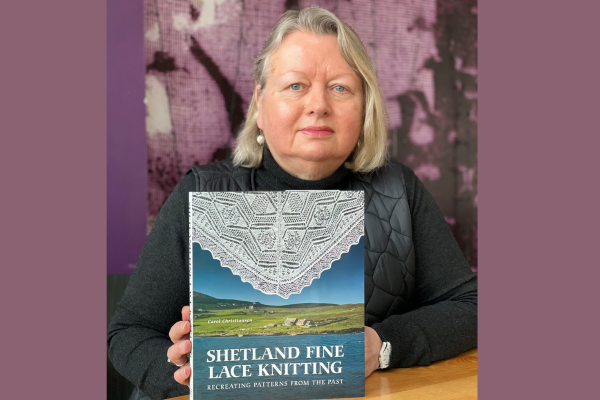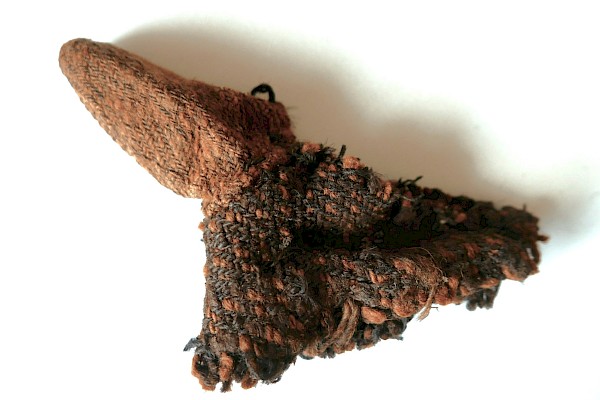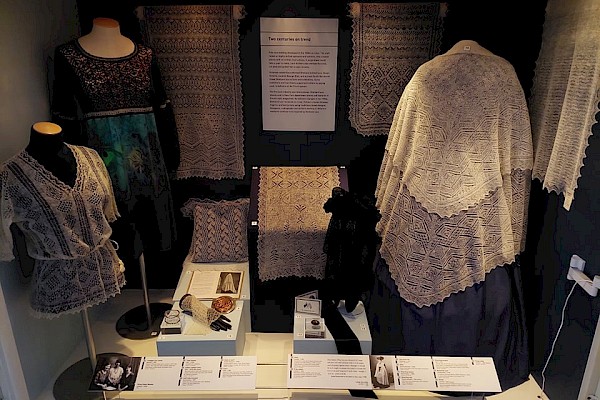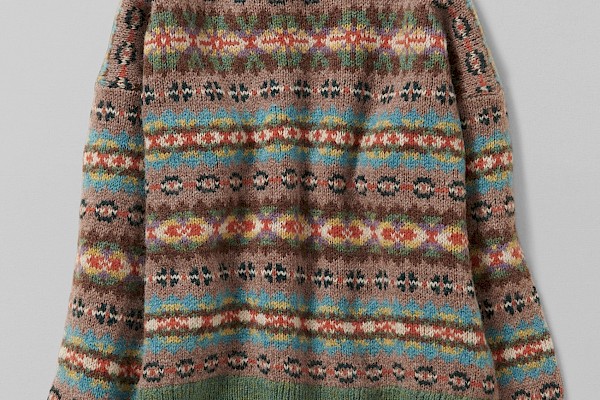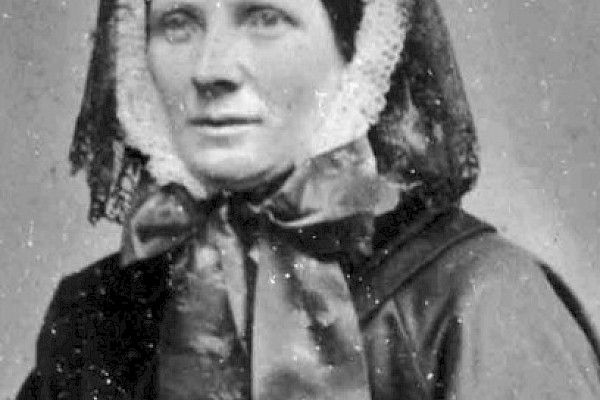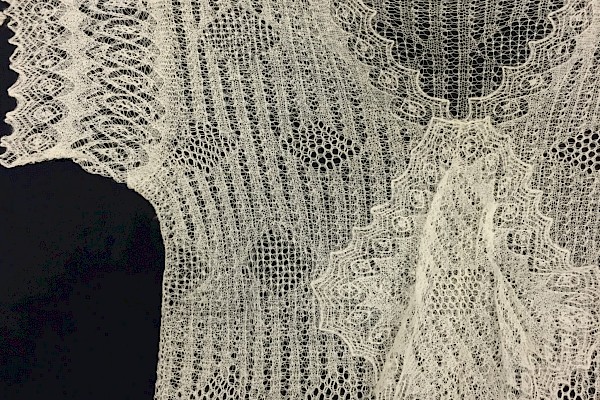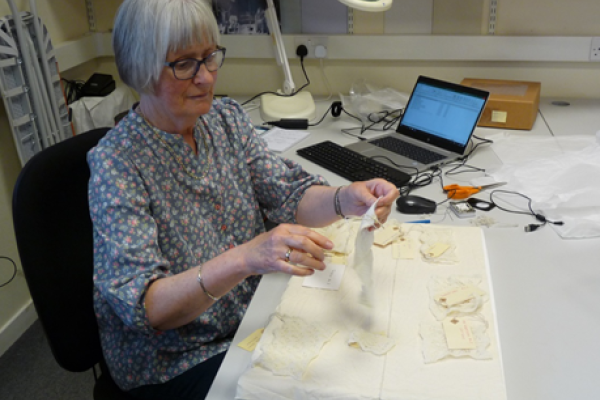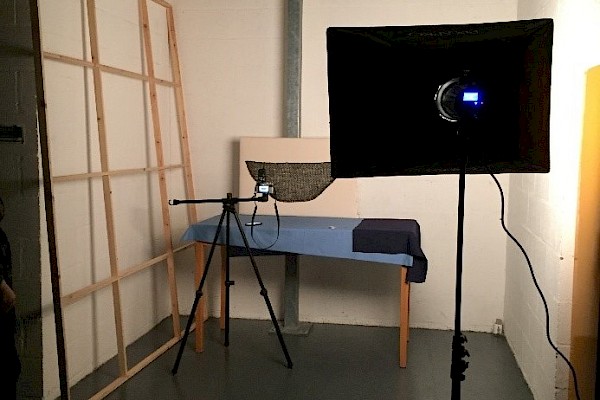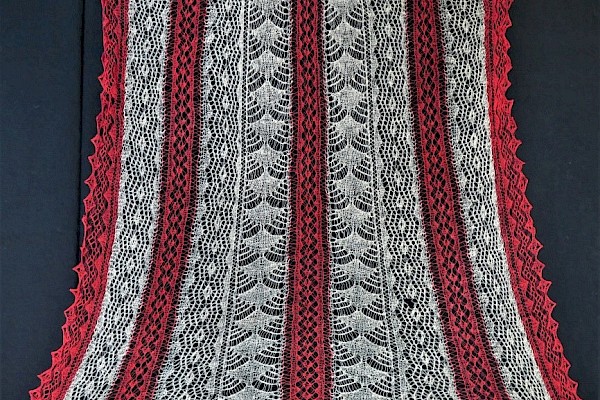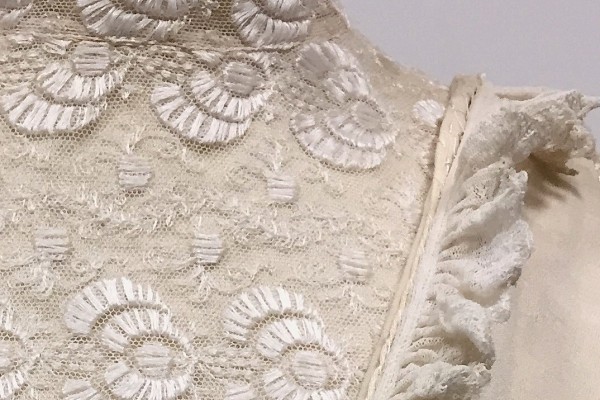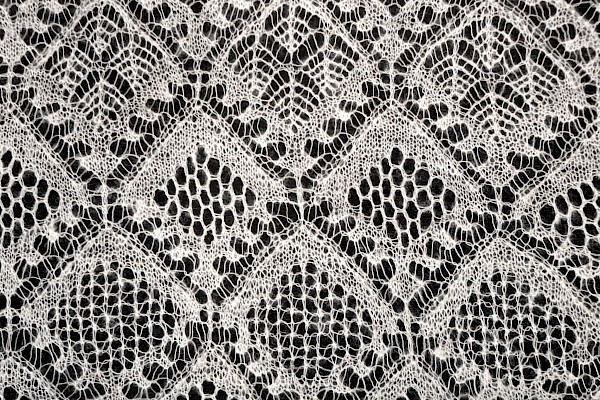The Fine Detail of Fine Knitted Lace
Our project team for the Lace Assessment Project is myself as Project Leader, Tracey Hawkins, our trusted and dynamic Collections Assistant and Kathleen Anderson and Anne Eunson as Craft Specialists. Tracey and I will be recording, assessing, and photographing up to 400 objects made in the Shetland knitted lace tradition. Anne and Kathleen will be studying individual pieces in-depth and advising on pattern motifs to be looked at in more detail. These motifs will be charted by Anne and samples knitted by Kathleen.
We are focusing on unusual and unique motifs to start with, to gain a better understanding of the scope of the craft. Some patterns have not been seen before and are not part of the usual repertoire of lace designs. We are intrigued by these motifs and hope to understand them through careful study.
We also plan to chart variations in standard patterns. So far we have identified several variations of Da Print o’ Da Wave pattern. Charting them will tell us how they really differ from each other, stitch-by-stitch. They may also suggest a progression of how the basic motif changed over time. This will provide insights into how the craft evolved, and how different knitters contributed to that evolution.
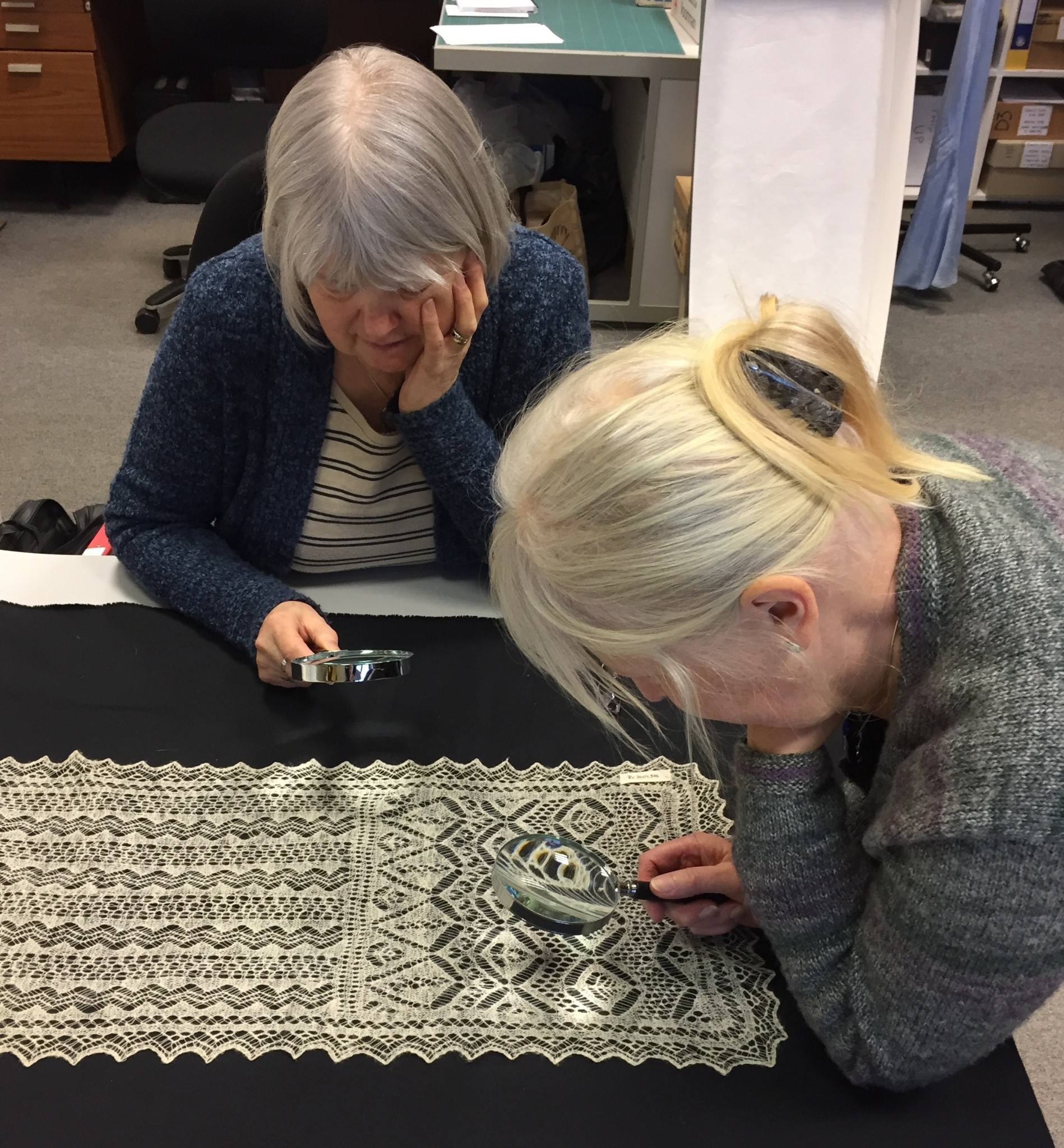
Above image shows Kathleen (left) and Anne (right) investigating the centre of a diamond motif on an early fine lace scarf.
The story of the Shetland knitted lace industry is a complex one. We are fortunate to have had the opportunity to work in partnership with the University of Glasgow, Department of Humanities on a PhD studentship funded by the Arts and Humanities Research Council. Roslyn Chapman was the chosen candidate and for four years she worked diligently in private and public archives to uncover the story of this industry. It was not easy – most knitters were anonymous and left few traces in archival records. But we now have a much broader understanding of how this cottage industry developed into an international trade and sustained itself through the 19th and 20th centuries. I’m very pleased to report that Dr Chapman’s The History of the Fine Lace Knitting Industry in Nineteenth and Early Twentieth Century Shetland, is now available for download. For anyone interested in how Shetland spinners, knitters and merchants contributed to this amazing craft, it is a must-read.

